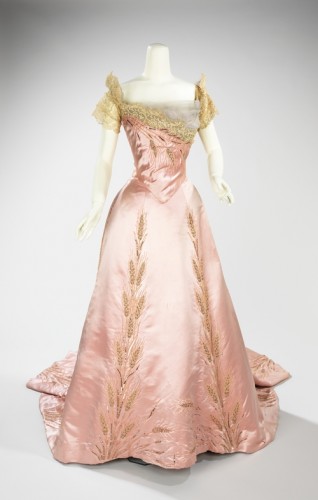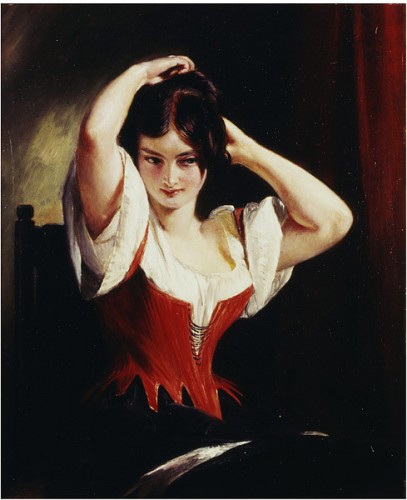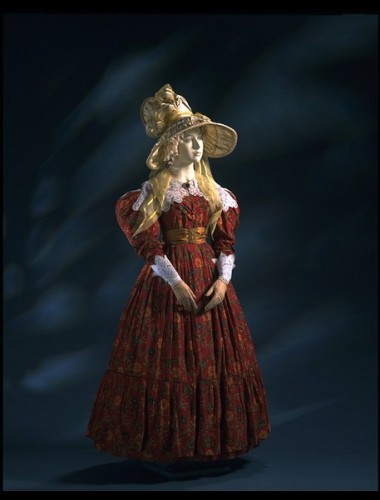Haft-Sin is a traditional Naw-Rúz table setting in Persia (Iran), more linked to the Persian roots of Naw-Rúz, than to the way Baha’is celebrate it, but still a lovely, picturesque idea. A Haft-Sin is an arrangement of 7 items that begin with S, each symbolising a wish for the new year. Here is my Haft-Sin for you:
Sabzeh – wheat, barley or lentil sprouts growing in a dish symbolize rebirth
Samanu – a sweet pudding made from wheat germ symbolizes affluence

Corset with embroidery of oak leaves and wheat sheaves, 1876, Royal Worcester Corset Company, Metropolitan Museum of Art
Senjed – the dried fruit of the oleaster tree, look like cherries and symbolizes love
SÄ«r – garlic, symbolizes medicine and good health.
Poor Dulcinea (below) was criticised for being so robust and healthy that she more resembled a ‘garlic eating peasant’ than the lady of Don Quixote’s fantasies.
SÄ«b – apples for beauty and health
Somaq – sumac berries – symbolizing sunrise (through their colour) and new beginnings
Serkeh – vinegar symbolizes age and patience.














Delicious, thank you dear one! So many beautiful things, indeed a blessing!
Beautiful!
This was wonderful reading (and viewing). Thank you!
You’ve found such preties for us!